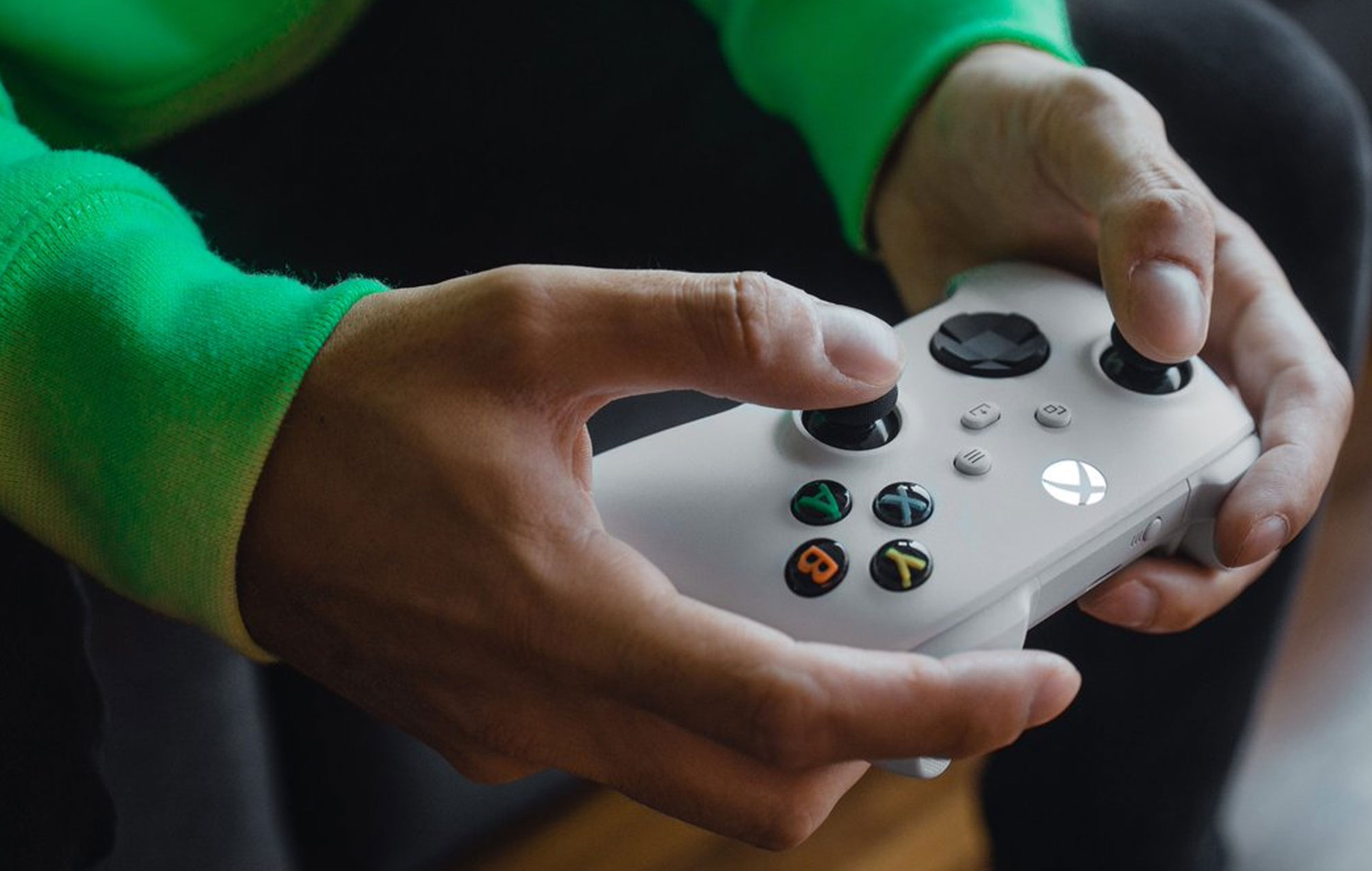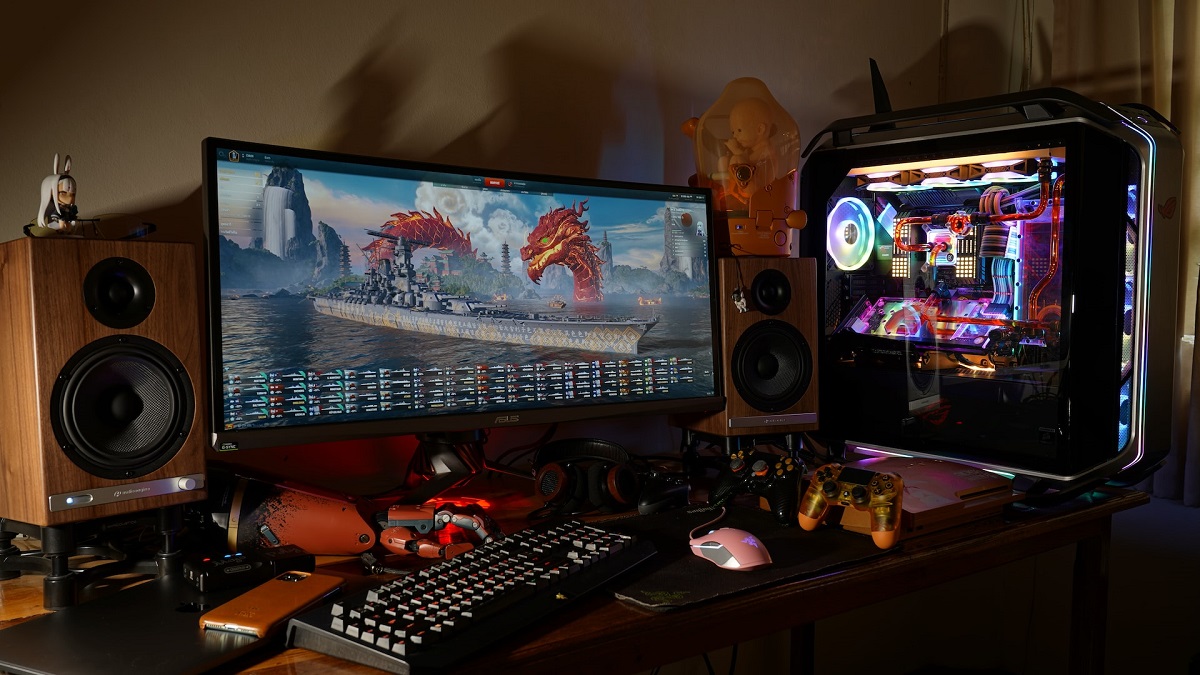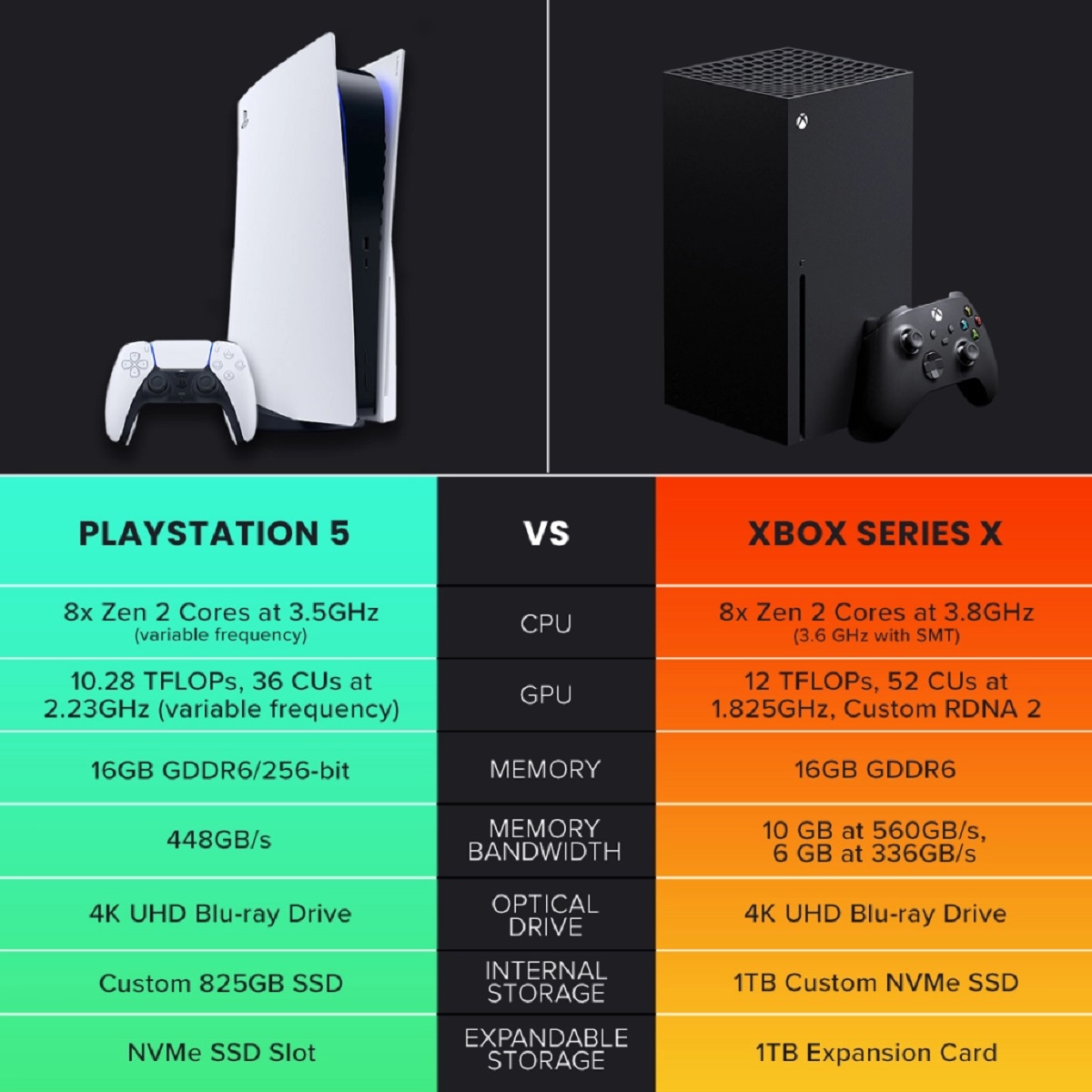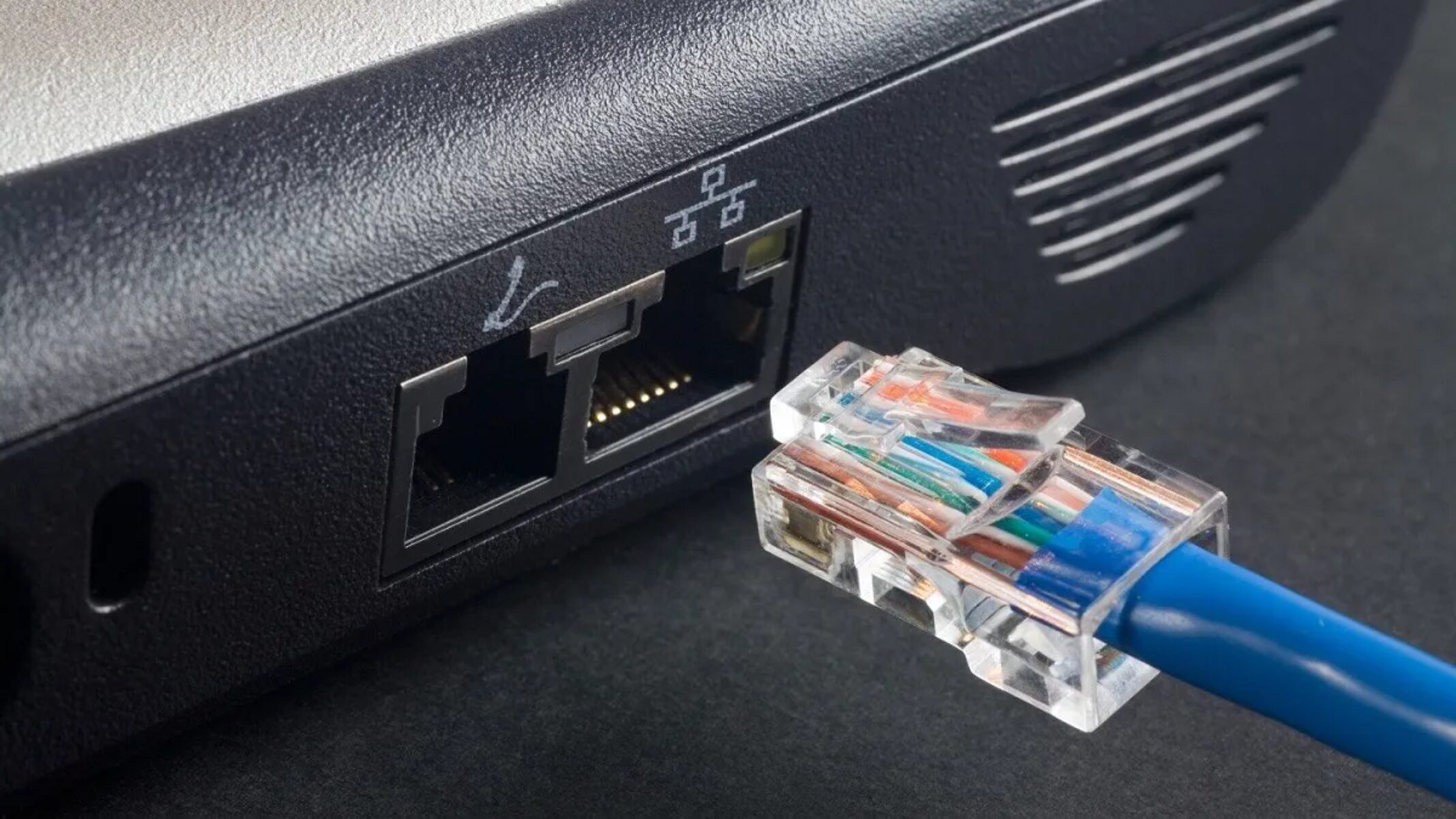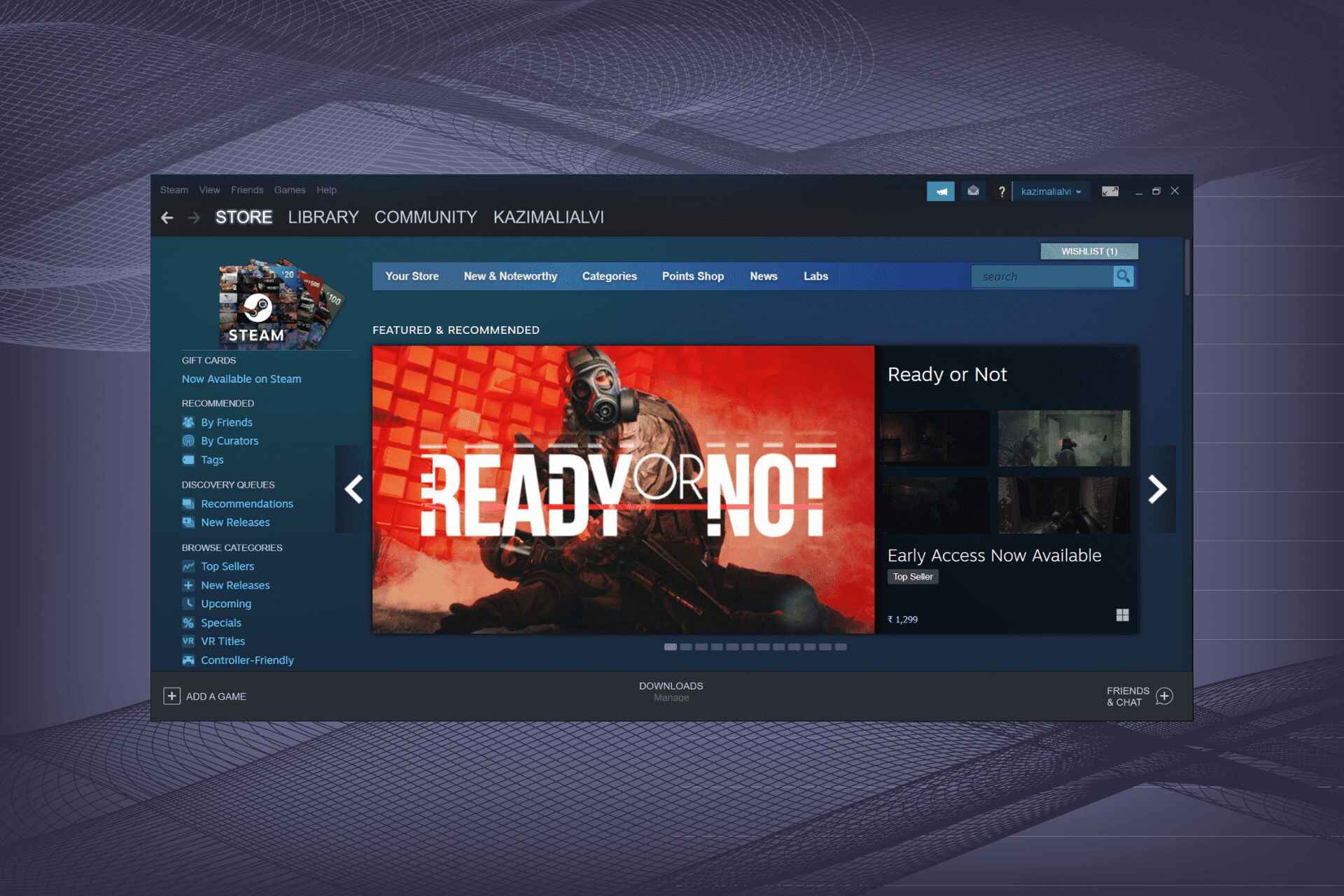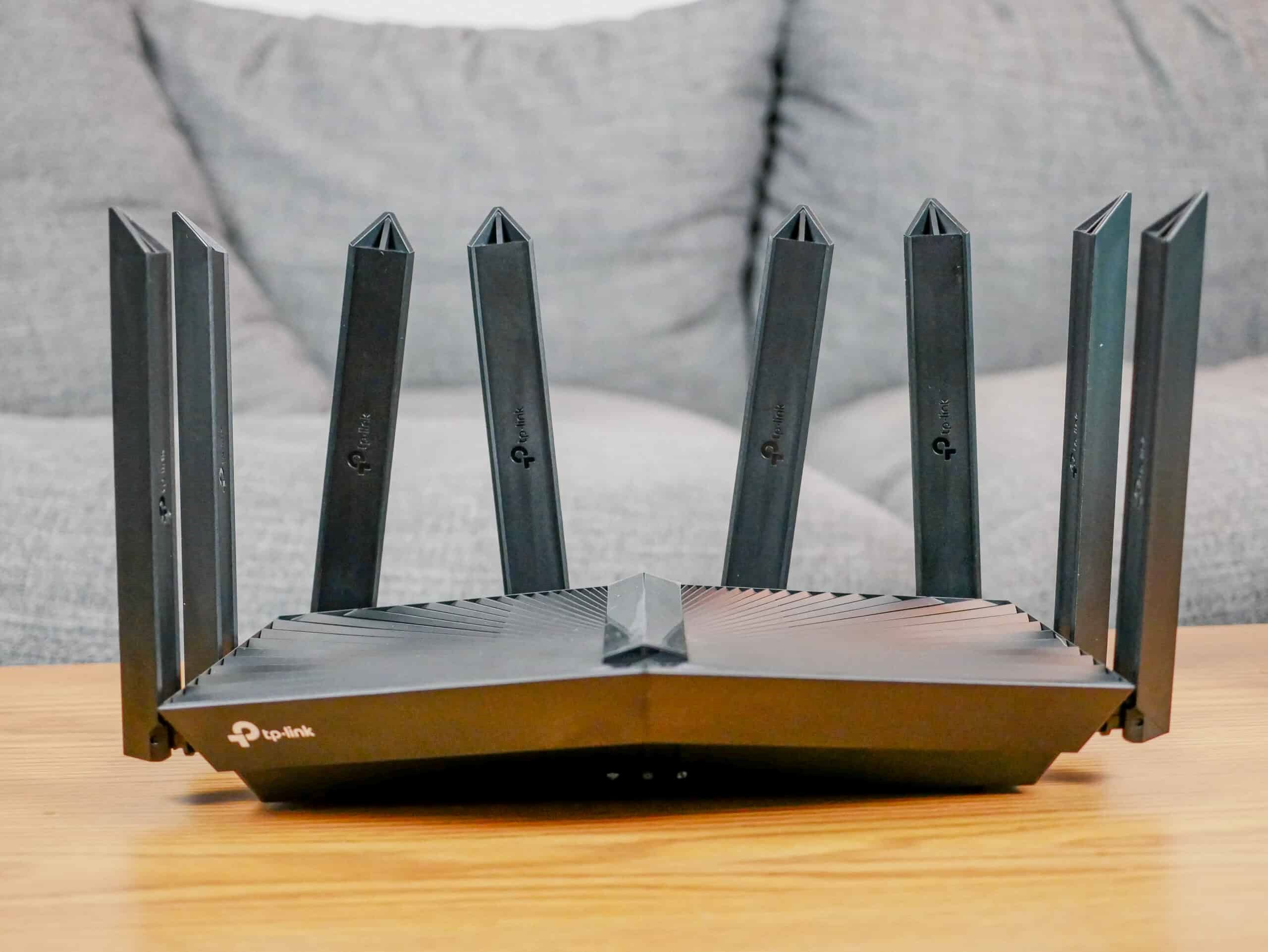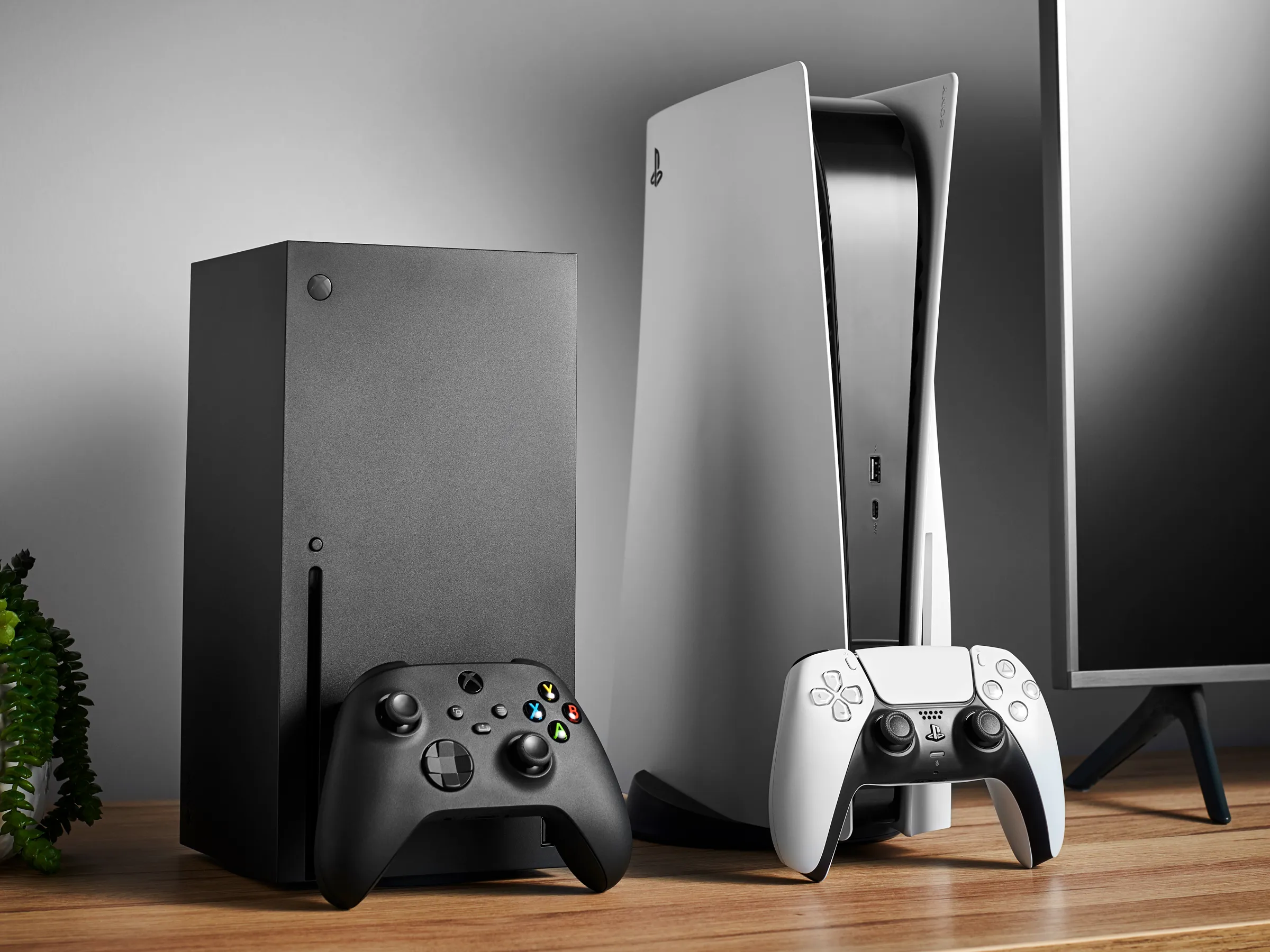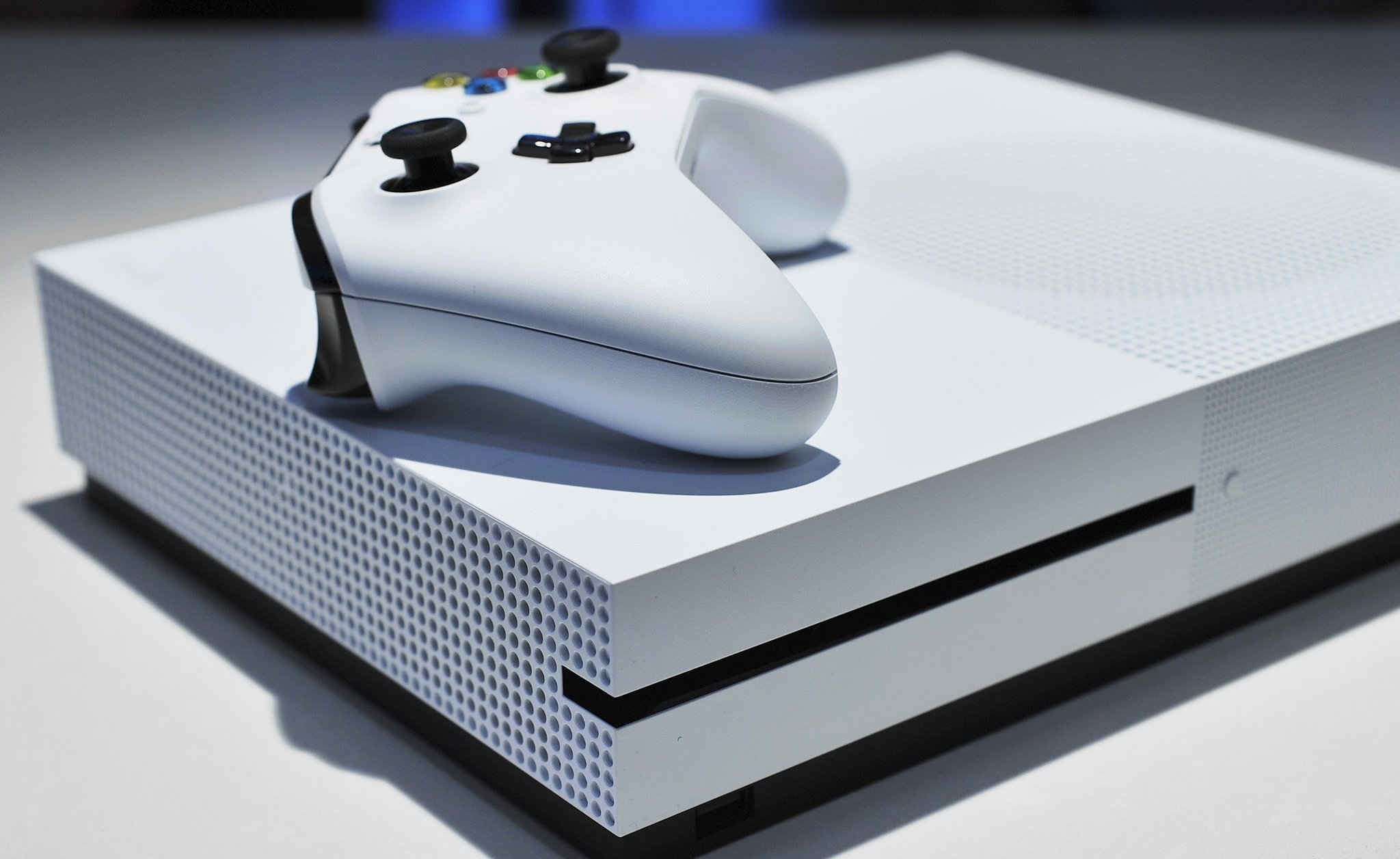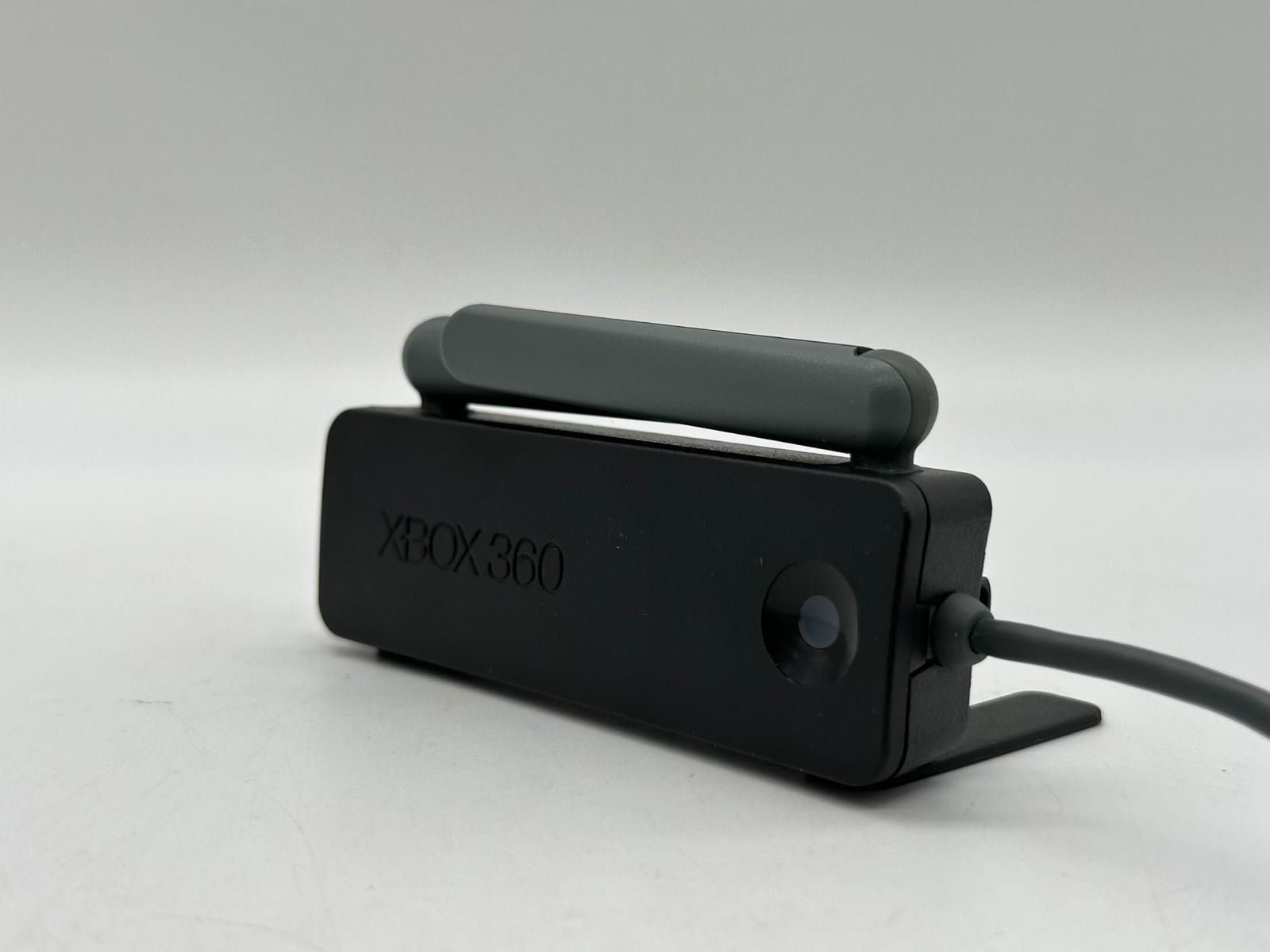How to Improve Xbox One Online Gaming
Online gaming on Xbox One provides a thrilling and immersive experience, but lag and slow connections can hinder the enjoyment. Fortunately, there are several steps you can take to enhance your online gaming performance. Here are some tips to improve your Xbox One online gaming experience:
Check your internet connection
The first step in improving your Xbox One online gaming experience is to check your internet connection. Make sure you have a stable and high-speed internet connection by running a speed test. If your connection is slow or unstable, consider upgrading your internet plan or contacting your internet service provider for assistance.
Optimize your network settings
To optimize your network settings for gaming on Xbox One, you can try adjusting your router’s Quality of Service (QoS) settings. QoS prioritizes gaming traffic over other internet activities, reducing lag and improving overall performance. Refer to your router’s manual or manufacturer’s website for instructions on how to enable QoS.
Use a wired connection
Using a wired Ethernet connection instead of Wi-Fi can significantly improve your online gaming experience. Ethernet connections offer better stability and lower latency compared to wireless connections, resulting in smoother gameplay and faster response times.
Upgrade your router
If you’re experiencing consistent lag and slow internet speeds while gaming on Xbox One, it may be time to upgrade your router. Look for a router that supports faster Wi-Fi standards, such as 802.11ac, and offers features like beamforming and MU-MIMO for improved wireless performance.
Close unnecessary applications and downloads
Running unnecessary applications or downloading large files in the background can consume bandwidth and impact your gaming experience. Before starting an online gaming session, close any applications running in the background and pause any ongoing downloads to free up bandwidth for your Xbox One.
Limit background tasks on your Xbox
Xbox One consoles often run background tasks, such as system updates and app installations, which can affect gaming performance. Limit these background tasks by enabling the “Instant-On” power mode and scheduling updates during off-peak hours to ensure they don’t interfere with your gaming sessions.
Reduce lag by managing network traffic
If multiple devices are connected to your network and consuming bandwidth, it can lead to increased lag and slower gameplay on Xbox One. Prioritize gaming traffic by temporarily disabling or limiting bandwidth consumption on other devices, such as smartphones, tablets, and smart TVs.
Set up Quality of Service (QoS) on your router
Quality of Service (QoS) allows you to prioritize gaming traffic over other internet activities on your network. Access your router’s settings and enable QoS, assigning higher priority to your Xbox One’s IP address for smoother gameplay and reduced lag.
Connect to the best server locations
During online gaming sessions, connecting to servers closer to your physical location can reduce latency and improve overall performance. In games with dedicated server options, manually select the server location that offers the best connection quality for optimal gameplay.
Use a VPN for gaming
Consider using a Virtual Private Network (VPN) for gaming on Xbox One to improve security and potentially reduce lag. A VPN can encrypt your internet traffic, protect your personal information, and optimize your connection by routing it through dedicated gaming servers.
Implementing these tips can significantly enhance your Xbox One online gaming experience. Experiment with different settings and options to find the best configuration for your specific network setup. Happy gaming!
Introduction
Online gaming has revolutionized the way we play and connect with others, and Xbox One stands at the forefront of this gaming revolution. With its powerful hardware and vast library of games, the Xbox One offers an incredible gaming experience. However, to fully enjoy online gaming on the Xbox One, you need a smooth and lag-free connection.
There’s nothing more frustrating than experiencing lag or slow internet speeds while playing your favorite multiplayer games. It can ruin the immersion and give your opponents an unfair advantage. But fear not! In this guide, we will explore various tips and techniques to improve your Xbox One online gaming experience.
Whether you’re battling it out in a intense first-person shooter or competing in a fast-paced sports game, a stable and high-speed internet connection is paramount. We will start by checking your internet connection and ensuring it’s up to par. We’ll then dive into optimizing your network settings by adjusting your router’s Quality of Service (QoS) settings and using a wired connection for maximum stability.
Upgrading your router can also make a significant difference in your online gaming performance. We’ll discuss the features to look for and why a modern router can improve your gaming experience. Managing your network traffic by closing unnecessary applications and downloads, as well as limiting background tasks on your Xbox, will be covered to further optimize your connection for gaming.
To reduce lag and improve latency, we’ll explore techniques such as prioritizing gaming traffic, connecting to the best server locations, and even using a Virtual Private Network (VPN) for gaming. By implementing these strategies, you can enhance your online gaming experience and enjoy smoother gameplay, faster response times, and a competitive edge over your opponents.
It’s important to note that network setups and internet service providers can vary, so it’s crucial to experiment and find the settings that work best for your specific situation. With these helpful tips and suggestions, you’ll be able to take your Xbox One online gaming to the next level and immerse yourself in the thrilling world of online multiplayer.
So, let’s embark on this journey to unlock the full potential of your Xbox One online gaming experience. Get ready for smoother gameplay, fewer connection issues, and endless hours of competitive fun. Let’s dive in!
Check your internet connection
Before diving into the world of online gaming on your Xbox One, it’s important to ensure that you have a stable and high-speed internet connection. A slow or unreliable connection can lead to frustrating lag and hinder your gaming experience. Here are some steps to check and optimize your internet connection:
First, run a speed test to check your internet connection’s upload and download speeds. You can use online speed test tools or download speed test apps on your smartphone. Compare the results with the minimum requirements for online gaming, which can vary depending on the game. If your internet speeds are consistently below the recommended thresholds, you may need to consider upgrading your internet plan or contacting your internet service provider for assistance.
Next, ensure that your network equipment is functioning properly. Restart your modem and router to refresh the connection and clear any temporary issues. Check for any physical damage to the cables or loose connections that may be affecting your internet connection. Sometimes, a simple reset or repositioning of your network equipment can make a noticeable difference in your connection quality.
If you’re using a wireless connection, check the signal strength between your Xbox One and your router. Keep your console as close to the router as possible to minimize signal interference. Thick walls, other electronics, and even neighboring Wi-Fi networks can impact your signal strength. Consider using a Wi-Fi range extender or upgrading to a router with better range and coverage if your connection is consistently weak or unstable.
It’s also important to ensure that your Xbox One is connected to the correct Wi-Fi network. Sometimes, your console may connect to a nearby network with a weaker signal. Access the network settings on your Xbox One and confirm that it’s connected to the correct network. If necessary, manually select your network and enter the password to establish a stable connection.
Regularly checking and monitoring your internet connection can help identify any issues or bottlenecks that may impact your online gaming experience. By ensuring a strong and stable connection, you’ll be ready to jump into the world of online gaming on your Xbox One with confidence.
Optimize your network settings
To maximize your online gaming performance on Xbox One, it’s essential to optimize your network settings. By making a few adjustments to your router’s settings, you can prioritize gaming traffic and minimize lag. Here are some tips to optimize your network settings:
One of the most effective ways to optimize your network settings for gaming is to enable Quality of Service (QoS) on your router. QoS allows you to prioritize certain types of network traffic, such as gaming, over other activities like streaming or downloading. By giving gaming traffic higher priority, you reduce the chances of experiencing lag or latency during your gaming sessions.
To enable QoS, access your router’s administration settings through your web browser. The process may vary depending on your router’s make and model, so consult your router’s manual or the manufacturer’s website for specific instructions. Look for the QoS or Traffic Control section and enable it. Assign higher priority to your Xbox One’s IP address or MAC address to ensure that gaming traffic gets prioritized.
Another important setting to consider is Universal Plug and Play (UPnP). UPnP allows your Xbox One to automatically forward the necessary ports for online gaming, eliminating the need for manual port forwarding. Enable UPnP in your router’s settings to ensure that your Xbox One has the necessary ports open for a seamless gaming experience.
Additionally, it’s beneficial to have a static IP address assigned to your Xbox One. A static IP address ensures that the same IP is always assigned to your console, making it easier to set up port forwarding and prioritize gaming traffic. Refer to your router’s manual or documentation on how to reserve a specific IP address for your Xbox One.
For optimal network performance, make sure your router’s firmware is up to date. Manufacturers often release firmware updates that improve performance, stability, and security. Check the manufacturer’s website or the router’s administration console for any available firmware updates, and follow the instructions to upgrade your router’s firmware.
Lastly, consider using a dedicated gaming router or a router with gaming-specific features. These routers often come equipped with advanced QoS settings, optimized firmware for gaming, and advanced traffic management options. Explore the market for routers specifically designed for gaming to find the one that best fits your budget and gaming needs.
By optimizing your network settings, you can prioritize gaming traffic, reduce lag, and create a smoother online gaming experience on your Xbox One. Take the time to configure your router with the best settings for your setup, and get ready to elevate your gaming sessions to the next level.
Use a wired connection
One of the most effective ways to improve your online gaming experience on Xbox One is to use a wired internet connection. While Wi-Fi is convenient, it can introduce latency and signal interference, which can result in lag and affect your gameplay. By using a wired connection, you can reduce these issues and enjoy a more stable and reliable connection. Here’s how to set up a wired connection for your Xbox One:
The first step is to ensure that your Xbox One console and your router are within close proximity. Locate an available Ethernet port on your router and connect one end of an Ethernet cable to the port. Then, connect the other end of the cable to the Ethernet port on the back of your Xbox One console. Make sure the connection is secure and snug.
Once connected, navigate to the network settings on your Xbox One. From the Xbox dashboard, go to “Settings” and select “Network.” Choose “Network settings” and then “Set up wireless network” (even though you’ll be using a wired connection). Follow the on-screen instructions to establish a wired connection with your router.
Using a wired connection offers several advantages over a wireless connection. Firstly, it provides a more stable and consistent connection, resulting in lower latency and reduced lag. This is particularly crucial for fast-paced multiplayer games where split-second reactions can make all the difference.
Furthermore, a wired connection eliminates the potential interference from other devices and neighboring Wi-Fi networks. Wi-Fi signals can be weakened by walls, distance, and device congestion in crowded areas. By using a wired connection, you bypass these potential obstacles and maintain a more reliable connection.
If your router is located far from your Xbox One console, you may need to purchase a longer Ethernet cable. These cables come in varying lengths, so choose one that suits your setup. It’s recommended to use a Cat6 or Cat7 Ethernet cable for optimal performance, although a Cat5e cable will also work fine.
Keep in mind that using a wired connection does require some additional setup, such as running the cable along walls or under carpets. However, the improved gaming experience makes it well worth the effort. Once your wired connection is established, you’ll notice smoother gameplay, faster response times, and a significant reduction in lag.
So, if you’re serious about improving your online gaming experience on Xbox One, consider using a wired connection. It may take a bit of extra work, but the benefits in terms of stability and performance make it well worth it. Say goodbye to frustrating lag and embrace a seamless gaming experience.
Upgrade your router
If you’re experiencing consistent lag and slow internet speeds while gaming on Xbox One, it may be time to consider upgrading your router. A high-quality router optimized for gaming can significantly improve your online gaming experience. Here are some factors to consider when upgrading your router:
One of the key features to look for in a gaming router is support for the latest Wi-Fi standards, such as 802.11ac or Wi-Fi 6 (802.11ax). These standards offer faster speeds and better performance, allowing for smoother gameplay and reduced latency. Look for routers that specifically mention gaming optimizations in their features or product descriptions.
Consider routers with advanced features like beamforming and Multi-User, Multiple-Input, Multiple-Output (MU-MIMO) technology. Beamforming focuses Wi-Fi signals towards your Xbox One console, improving the range and overall signal quality. MU-MIMO technology enables the router to handle multiple devices simultaneously, reducing congestion and providing a more stable connection.
Another important consideration is the number of available Ethernet ports. Ensure that the router has enough ports to accommodate not only your Xbox One console but also any other devices that you may want to connect via a wired connection. Having extra ports also allows for future expansion if you plan on adding more gaming devices or peripherals.
Take note of the router’s processor and memory specifications. A powerful processor can handle the demands of gaming, ensuring smooth performance even during intense multiplayer sessions. Sufficient memory, especially for routers with advanced features, helps with smooth data transmission and reduces processing delays.
Security features are also crucial when choosing a gaming router. Look for routers with built-in firewalls, robust encryption protocols, and support for Virtual Private Networks (VPNs). These features protect your network and personal information from potential threats while gaming online.
Price is always a factor when considering a router upgrade. While high-end gaming routers can come with a hefty price tag, there are affordable options available that offer good gaming performance. Research and compare options within your preferred price range to find the best balance between performance, features, and cost.
Before making a purchase, read customer reviews and check industry experts’ recommendations. Look for routers that consistently receive positive feedback for gaming performance, reliability, and ease of setup. Pay attention to any potential compatibility issues or limitations that users may have encountered, such as specific firmware versions or settings required for optimal gaming performance.
Upgrading your router can have a significant impact on your online gaming experience. A high-performance gaming router can provide faster speeds, reduced lag, and a more stable connection. When combined with other optimization techniques, such as wired connections and network prioritization, an upgraded router can take your Xbox One gaming to the next level of performance.
Close unnecessary applications and downloads
When it comes to optimizing your Xbox One online gaming experience, it’s important to minimize any unnecessary bandwidth usage. Closing applications and pausing downloads can help ensure that your console has sufficient resources to handle online gaming without any interruptions or lag. Here’s how to close unnecessary applications and downloads:
Prior to starting an online gaming session, take a moment to close any applications running in the background on your Xbox One. Applications running in the background, especially resource-intensive ones, can consume valuable bandwidth and processing power, impacting the overall performance of your gaming experience. Navigate to the Home screen by pressing the Xbox button on your controller and manually close any open applications by highlighting them and pressing the Menu button, then selecting “Quit”.
Furthermore, pause any ongoing downloads or updates on your console. Downloads not only consume bandwidth but can also affect the stability of your connection, leading to higher latency and lag during online gaming. To check and pause downloads, go to the “My games & apps” section on the Home screen. From there, select “Queue” and pause any active downloads by highlighting them and pressing the Menu button, then selecting “Pause”.
It’s also beneficial to limit or disable automatic updates on your Xbox One. Automatic updates can run in the background and consume your bandwidth without your knowledge. To manage updates, go to “Settings” on your Xbox One dashboard, select “System”, then choose “Updates & downloads”. From there, you can choose to disable automatic updates or schedule them during off-peak hours when you’re not actively gaming.
Aside from applications and downloads on your Xbox One console, it’s also important to consider any streaming services, gaming platforms, or other devices on your network that may be consuming bandwidth. Devices like smartphones, tablets, and smart TVs that are streaming media or performing data-intensive tasks can hog the network’s resources, affecting your gaming experience. Encourage other members of your household to limit their bandwidth usage and avoid concurrent streaming or downloading while you’re gaming.
By closing unnecessary applications, pausing downloads, and minimizing bandwidth usage from other devices, you create an optimal environment for online gaming on your Xbox One. This ensures that the majority of your network resources are dedicated to your gaming session, reducing lag, and providing a smoother and more enjoyable gaming experience.
Remember, offline applications and downloads can always be resumed later, allowing you to focus on the most important task at hand – dominating the online gaming arena on your Xbox One!
Limit background tasks on your Xbox
While using your Xbox One for gaming, there are often background tasks running that can affect your online gaming performance. System updates, app installations, and other background processes can consume resources and bandwidth, leading to increased latency and potential lag. By limiting these background tasks, you can prioritize your gaming experience and optimize your Xbox One for online gaming. Here’s how to limit background tasks on your Xbox:
First, enable the “Instant-On” power mode on your Xbox One. This mode allows the console to download updates and install apps in the background while it’s in standby mode. By enabling Instant-On, you can schedule updates to occur during off-peak hours, ensuring that they don’t interfere with your gaming sessions. To enable Instant-On, go to “Settings”, select “Power & startup”, and then choose the “Instant-On” power mode.
In addition to enabling Instant-On, it’s important to take advantage of the “Queue” feature in the “My games & apps” section. The Queue displays all the pending updates, installations, and downloads on your Xbox One. By manually managing the Queue, you can pause or prioritize specific updates or installations. Prioritize the updates related to your current gaming session and pause any downloads or installations that are not immediately necessary.
To access the Queue, go to the “My games & apps” section on the Home screen. Select “Queue” and manage the updates and downloads accordingly. You can highlight an item in the Queue and press the Menu button on your controller to access options like “Pause” or “Resume”. This allows you to control which tasks should proceed in the background while you focus on your online gaming experience.
Another way to limit background tasks is to manage your Xbox Live notifications. Xbox Live notifications can be distracting and interrupt your gameplay. To manage your notifications, navigate to “Settings” and choose “Preferences”. From there, select “Notifications” and customize the notification settings based on your preferences. By minimizing interruptions, you can maintain focus and reduce any potential gameplay disruptions.
Lastly, consider scheduling your background downloads and updates during off-peak hours. If you’re aware of specific updates or installations that need to take place, plan them for a time when you’re not actively using your Xbox One for gaming. Scheduling these tasks during low-usage periods ensures that they don’t interfere with your online gaming sessions and keeps your console dedicated to providing the best gaming performance possible.
By limiting background tasks on your Xbox One, you allocate more resources and bandwidth to your online gaming experience. This helps reduce latency, optimize performance, and maintain a smoother gameplay experience. Take control of your Xbox One’s background tasks and tailor them to prioritize your gaming needs.
Remember, your Xbox One is primarily a gaming console, and by managing its background tasks, you can ensure that it remains focused on delivering the best gaming experience for you.
Reduce lag by managing network traffic
Reducing lag and improving network performance is crucial for a smooth online gaming experience on your Xbox One. One effective method to achieve this is by managing your network traffic. By optimizing how your network resources are utilized, you can minimize latency, reduce lag, and create a more stable gaming environment. Here are some strategies to manage your network traffic and improve your online gaming experience:
Prioritize gaming traffic: One way to minimize lag is by giving priority to gaming traffic over other activities on your network. Most modern routers offer Quality of Service (QoS) settings that allow you to prioritize specific devices or applications. By setting your Xbox One as the highest-priority device, you ensure that it receives the necessary bandwidth and resources, reducing the chances of lag during gameplay.
Limit bandwidth consumption: Bandwidth-hogging applications and devices can significantly impact your online gaming experience. Consider limiting or disabling bandwidth-consuming activities such as file downloads, streaming services, or other devices performing high-bandwidth tasks while gaming. Allocating more bandwidth to your Xbox One prioritizes gaming traffic and reduces the likelihood of lag caused by network congestion.
Use Quality of Service (QoS) settings: QoS settings not only prioritize gaming traffic but also allow you to set specific bandwidth limits for different devices or applications on your network. By allocating a specific amount of bandwidth for gaming, you can further reduce lag and maintain a consistent connection. Access your router’s administration settings and enable QoS to configure these settings according to your preferences.
Enable Traffic Meter: Many routers have a built-in Traffic Meter feature that allows you to monitor and control your data usage. By tracking the amount of data consumed by different devices or applications, you can identify bandwidth-intensive processes that may be causing lag. Use this information to make informed decisions and manage your network traffic more effectively.
Manage concurrent connections: If multiple devices are connected to your network and consuming bandwidth simultaneously, it can lead to increased latency and a less stable connection. Limit the number of devices actively using the network when gaming on your Xbox One. Encourage other household members to refrain from bandwidth-intensive activities and prioritize your gaming experience during your online sessions.
Avoid peak usage hours: Internet usage tends to peak during specific hours of the day when more users are online simultaneously. The increased network activity can result in slower speeds and higher latency. To reduce lag, try to schedule your gaming sessions during off-peak hours when network congestion is minimal. This helps ensure a smoother and more consistent gaming experience on your Xbox One.
Implementing these strategies for better network traffic management can significantly reduce lag and enhance your online gaming experience on your Xbox One. Experiment with different settings and observe the improvements in your gameplay. Remember, a well-managed network contributes to a responsive and enjoyable gaming environment, allowing you to immerse yourself fully in the worlds of your favorite games.
Set up Quality of Service (QoS) on your router
Quality of Service (QoS) is a powerful feature available on most modern routers that allows you to prioritize specific types of network traffic, such as gaming, over other activities. By setting up QoS on your router, you can optimize your network for online gaming on your Xbox One, reduce lag, and enhance your overall gaming experience. Here’s how to set up QoS for your gaming needs:
Access your router’s settings: Open a web browser on a device connected to your home network and enter your router’s default gateway address in the address bar. This address is usually printed on the back of your router or can be found in the manual or manufacturer’s website. Log in to your router’s administration settings using the provided username and password.
Locate the QoS settings: The exact location and naming of the QoS settings may vary depending on your router model and firmware. Look for options like “Quality of Service”, “Traffic Control”, or “Bandwidth Control”. If you are unable to find the QoS settings, consult your router’s manual or the manufacturer’s website for specific instructions.
Enable QoS: Once you’ve located the QoS settings, enable it. This will activate the QoS feature on your router and allow you to configure it for optimal gaming performance.
Configure QoS: The configuration options may vary depending on your router. Generally, you can prioritize specific devices or applications by assigning them higher priority or allocating a set amount of bandwidth for them. In the case of Xbox One gaming, you want to prioritize or allocate bandwidth to your console.
Assign priority: Some routers allow you to assign priority based on device IP addresses or MAC addresses. Locate the IP address or MAC address associated with your Xbox One console in your router’s connected devices list. Assign this device a higher priority to ensure that gaming traffic gets prioritized over other network activities.
Allocate bandwidth: Other routers may provide the option to allocate a certain percentage of your total bandwidth for specific devices or applications. Allocate a significant portion of your bandwidth for your Xbox One console to ensure a stable and consistent connection dedicated to gaming.
Apply and test: Once you have configured the QoS settings to prioritize gaming traffic or allocate bandwidth for your Xbox One console, save the settings and apply them. Test your new QoS configuration by starting an online gaming session and monitoring your gaming experience. You should notice reduced lag, improved response times, and smoother gameplay.
Fine-tuning: If you encounter any issues or want to further optimize your QoS settings, you can experiment with different configurations. Adjust the prioritization or bandwidth allocation to achieve the best balance between gaming performance and other network activities. Continuously monitor and refine your QoS settings based on your gaming needs and the overall network demands.
Setting up Quality of Service (QoS) on your router ensures that your Xbox One receives the necessary bandwidth and resources for optimal gaming performance. By prioritizing gaming traffic and minimizing the impact of other network activities, you can reduce lag, latency, and interruptions, creating a smoother and more enjoyable online gaming experience on your Xbox One.
Connect to the best server locations
When it comes to online gaming on your Xbox One, the server location you connect to can have a significant impact on your gameplay experience. Connecting to the best server locations plays a crucial role in reducing latency, minimizing lag, and ensuring a smooth and competitive gaming session. Here’s how to connect to the best server locations for optimal online gaming:
Choose dedicated servers: Many multiplayer games offer the option to connect to dedicated servers. Dedicated servers are specifically designed to provide a stable and optimized gaming experience. When selecting a game server, prioritize those that offer dedicated servers, as these are often located strategically to offer the best connection quality and minimize latency.
Consider geographical proximity: Connecting to game servers that are geographically closer to your physical location can help reduce latency and improve your overall connection quality. Greater distance between your location and the game server can result in longer network travel times, leading to higher latency and potential lag. When possible, choose servers that are located near you or in regions with excellent network infrastructure.
Test different servers: Some games allow you to manually select the server you connect to. Take advantage of this feature by testing different servers and assessing the connection quality. Play a few games on each server to determine which one offers the lowest latency and the smoothest gameplay experience. Experimenting with different servers can help you find the best one that suits your location and provides an optimal connection.
Monitor server performance: Keep an eye on the performance of the servers you connect to. If you notice consistent problems with lag or latency on a specific server, it may be worth switching to a different one. Game communities often share information about server performance and provide recommendations for the best server options. Stay connected with the game’s community forums or social media groups to gather insights and make informed decisions about server selection.
Check for server maintenance: Game developers regularly perform server maintenance to improve performance, stability, and security. Stay informed about scheduled maintenance windows by checking the game’s official website, social media channels, or community forums. Avoid connecting to servers undergoing maintenance, as it can result in unpredictable connections and potential disruptions to your gaming experience.
Utilize ping measurement tools: Ping measurement tools can help you assess the latency between your Xbox One console and different game servers. Some games may have built-in tools that display the ping or latency to each server, allowing you to make informed decisions about server selection. Additionally, there are external websites and applications that can measure and display your ping to different server locations. Use these tools to identify servers with the lowest ping and choose the ones that offer the best connection quality.
Connecting to the best server locations is essential for minimizing latency, reducing lag, and ensuring a smooth online gaming experience on your Xbox One. Take the time to research, test, and monitor server performance to find the optimal servers for your location and game of choice. With a dedicated and high-quality connection to the server, you can fully immerse yourself in the gameplay and compete at your best.
Use a VPN for gaming
Adding an extra layer of security and improving your online gaming experience may involve using a Virtual Private Network (VPN). A VPN can help safeguard your privacy and data while offering potential benefits for gaming, such as reducing latency and accessing region-restricted content. Here’s how using a VPN for gaming on your Xbox One can enhance your gameplay:
Improved security: When gaming online, protecting your personal information and data is crucial. Using a VPN encrypts your internet traffic, making it harder for hackers or other malicious actors to intercept your data. With your connection secured, you can play games with peace of mind, knowing that your sensitive information is safe from potential threats.
Reduced latency: A VPN can potentially help reduce latency and improve gaming performance. By routing your internet traffic through dedicated gaming servers, a VPN can optimize the connection path and minimize the number of hops between your Xbox One and the game server. This optimized routing can result in lower latency, providing a smoother and more responsive gaming experience.
Bypassing region restrictions: Some games or game content may be restricted to specific regions. By using a VPN, you can effectively change your virtual location and access region-locked content. For example, if a game or specific game features are only available in certain countries, you can connect to a VPN server in that country to bypass the restriction and enjoy the full gaming experience.
Avoiding network throttling: Internet service providers (ISPs) may throttle or slow down certain types of internet traffic, including gaming data. This can result in inconsistent connection quality and increased latency while gaming. By connecting to a VPN, your traffic is encapsulated within an encrypted tunnel, making it difficult for ISPs to identify and throttle gaming traffic. This can result in a more stable and consistent connection for online gaming.
Choosing a gaming-optimized VPN: When selecting a VPN for gaming, it’s essential to choose a provider that offers optimized servers for gaming. These servers are specifically tailored to provide the best possible gaming experience, with low latency and high-speed connections. Look for VPN providers that have a network of servers in various locations, ensuring that you can connect to a server that offers the best performance for your gaming needs.
Considerations for VPN usage: While VPNs can enhance your gaming experience, it’s important to note a few considerations. First, using a VPN may introduce additional latency depending on the distance between your location and the VPN server. Additionally, some VPN services may limit bandwidth, so ensure you choose a provider with high-speed connections and no data restrictions. Lastly, because VPNs encrypt your traffic, it’s possible that your internet speed may be affected. Test different VPN providers and servers to find the optimal balance between privacy, security, and gaming performance.
By utilizing a VPN for gaming on your Xbox One, you can enhance your security, reduce latency, access region-restricted content, and potentially bypass network throttling. Take the time to research and choose a reputable VPN provider with optimized servers for gaming. With the added protection and potential performance benefits of a VPN, you can elevate your gaming experience to new levels of security and enjoyment.
Disable bandwidth-hogging devices
When it comes to online gaming on your Xbox One, the performance of your network can be significantly affected by bandwidth-hogging devices. These devices consume a large portion of your available bandwidth and can cause lag and connectivity issues while gaming. To enhance your online gaming experience, it’s essential to identify and disable these bandwidth-consuming devices. Here’s how to minimize their impact:
Identify bandwidth-hogging devices: Begin by identifying the devices on your network that consume a significant amount of bandwidth. These can include streaming devices, smart TVs, smartphones, computers, or other consoles. The easiest way to identify them is by monitoring your network usage through your router’s administration interface or using dedicated network monitoring software.
Pause or disable downloads and updates: Bandwidth-consuming activities such as downloading large files or streaming media can eat up a substantial portion of your network’s bandwidth, impacting your gaming performance. Prioritize your gaming experience by pausing or disabling any active downloads or updates on these devices while gaming on your Xbox One. This will free up bandwidth for your gaming sessions.
Implement bandwidth controls: Many modern routers offer bandwidth control features that allow you to set limits on individual devices or applications. Utilize this functionality to allocate a specific portion of the available bandwidth for each device. By reducing the allocated bandwidth for bandwidth-hogging devices, you can ensure that a significant portion of the bandwidth is reserved for your Xbox One’s gaming needs.
Enable device prioritization: Some routers support Device Priority or Quality of Service (QoS) settings that allow you to prioritize specific devices or applications. Prioritize your Xbox One console to give it the highest priority, ensuring that it receives the necessary bandwidth and resources for a smooth gaming experience. This minimizes the impact of other devices and prioritizes your gaming traffic over other network activities.
Set time limits for streaming devices: If streaming devices or smart TVs are consuming excessive bandwidth while you’re gaming, consider setting time limits for their usage. This can be done through parental control features on your router or by directly modifying settings on the devices themselves. By limiting the time these devices are actively consuming bandwidth, you can free up more resources for your online gaming sessions.
Communicate and coordinate with other users: If multiple people in your household are using bandwidth-intensive devices or applications, it’s important to communicate and coordinate with them. Request that they limit their bandwidth consumption while you’re gaming to ensure a stable and high-performance connection. Educate other household members about the impact of bandwidth-hogging devices on your gaming experience and collaborate to optimize network usage.
By disabling or limiting the usage of bandwidth-hogging devices, you can allocate more bandwidth for your Xbox One gaming sessions. This ensures a smoother and more responsive online gaming experience, with reduced lag and connectivity issues. Managing and optimizing your network for gaming helps prioritize your gaming needs and creates an environment conducive to competitive and enjoyable gameplay on your Xbox One.
Monitor and control Xbox Live usage
Monitoring and controlling your Xbox Live usage is essential to optimize your online gaming experience on Xbox One. By managing your Xbox Live activity, you can ensure that you’re getting the most out of your internet connection, preventing unnecessary usage that may impact your gaming performance. Here’s how to effectively monitor and control your Xbox Live usage:
Monitor data consumption: Start by monitoring your data consumption on Xbox Live. The Xbox One provides a detailed breakdown of your network usage, allowing you to see how much data is being used during gaming sessions, downloading updates, or streaming content. Access the Network Settings on your Xbox One console to view this information. Regularly check your data usage to identify any excessive or unexpected consumption.
Manage automatic updates: Xbox One allows for automatic updates of games, apps, and the console itself. While convenient, enabling automatic updates can result in high data usage, particularly if updates occur during peak gaming hours. To control your data usage, consider manually managing updates. Go to the Xbox Settings and choose “Update & downloads”. From there, you can disable automatic updates or configure specific update preferences to ensure they occur during off-peak hours.
Optimize game installations: Game installations can consume a significant amount of data. Instead of automatically installing every game you own, only install the games you plan to play in the near future. Prioritize the games that you frequently play online or those that require the latest updates. By selectively installing games, you can conserve data usage and allocate your bandwidth more efficiently.
Control streaming services: Streaming services such as Netflix, Hulu, or YouTube on your Xbox One can consume substantial bandwidth. Be mindful of the streaming quality settings, as higher quality settings require more data. Adjust the streaming quality to a lower resolution or consider limiting the usage of streaming services while you’re engaged in online gaming. Controlling streaming on other devices in your household will also help free up additional bandwidth for your gaming sessions.
Set bandwidth limits: Many routers have bandwidth control features that allow you to set specific limits for devices or applications. Utilize this functionality to allocate a specific amount of bandwidth for Xbox One gaming. By setting a limit, you can ensure that your Xbox One receives the necessary bandwidth while preventing excessive data consumption that may impact other devices or create network congestion.
Monitor and manage multiplayer sessions: While playing multiplayer games on Xbox Live, pay attention to the number of players in your session. Each additional player increases the bandwidth requirements for a smooth gaming experience. If you notice lag or connection issues, consider managing your multiplayer sessions by reducing the number of players or connecting to servers with lower latency. This can help improve the overall stability and performance of your online gameplay.
Implement parental controls: If you share your Xbox One console with others, consider utilizing parental control features to monitor and control Xbox Live usage. Parental controls allow you to set restrictions on online multiplayer access, communication settings, and even restrict purchasing capabilities. By setting appropriate limits, you can manage the Xbox Live usage of younger or less-experienced users, ensuring a suitable and optimized gaming environment.
By actively monitoring and controlling your Xbox Live usage, you can optimize your online gaming experience on Xbox One. Managing your data consumption, controlling updates and streaming services, and utilizing router features for bandwidth control enable you to make the most of your internet connection while ensuring a smooth and uninterrupted gaming experience.
Update your Xbox One console
Regularly updating your Xbox One console is crucial for maintaining optimal performance and ensuring a smooth online gaming experience. Updates often include important improvements, bug fixes, and feature enhancements that can enhance the stability, security, and functionality of your console. Here’s why and how to keep your Xbox One console up to date:
Benefits of updating: Updates for your Xbox One console bring various benefits. They may include performance optimizations that improve system responsiveness and reduce lag during gameplay. Updates can also introduce new features, enhance compatibility with the latest games, and address security vulnerabilities. By keeping your console updated, you ensure that you can take advantage of these improvements and have the best possible gaming experience.
Automatic updates: By default, your Xbox One is set to automatically download and install updates. This ensures that your console stays up to date without requiring manual intervention. However, it’s important to check your console’s settings to confirm that this feature is enabled. To do this, go to the “Settings” menu, select “System”, and then choose “Updates & downloads”. Verify that the “Keep my console up to date” option is turned on.
Manual updates: If you prefer more control over the update process, you can choose to manually check for and install updates. To manually check for updates, go to “Settings” on your Xbox One dashboard, select “System”, and then choose “Updates & downloads”. From there, select “Console update available” and follow the on-screen instructions to download and install any available updates.
System updates vs. game updates: It’s important to distinguish between system updates and game updates. System updates refer to updates for the Xbox One console itself. These updates are essential for overall system stability and performance. Game updates, on the other hand, are specific updates released by game developers to enhance gameplay, address bugs, or introduce new content. Both types of updates are important and should be regularly checked and installed.
Internet connection and storage space: To successfully update your Xbox One console, you need a stable and high-speed internet connection. Ensure that your console is connected to the internet before attempting to check for and install updates. Additionally, make sure that you have sufficient storage space available on your console to accommodate the updates. Clearing up unnecessary data or deleting unused games and apps can help free up space for updates.
Timing of updates: To minimize interruptions during gameplay, consider scheduling updates during off-peak hours. This way, updates won’t interfere with your gaming sessions or consume excessive bandwidth that may cause lag. Check the “Updates & downloads” section in the Settings menu to configure the scheduling preferences for system updates.
Mandatory updates: Some updates may be mandatory, meaning you are required to install them before you can connect to Xbox Live or play specific games online. These updates often address critical security patches or make fundamental changes that ensure compatibility with the latest online features. It’s important not to ignore mandatory updates, as failure to install them may result in restricted online access or gameplay limitations.
By regularly updating your Xbox One console, you can maintain optimal performance, enjoy new features, and mitigate any potential issues or vulnerabilities. Whether you choose to enable automatic updates or manually install them, staying up to date ensures that you have the best gaming experience possible on your Xbox One.
Clear cache and reset network settings
If you’re experiencing connectivity issues or encountering performance issues with your Xbox One console, clearing the cache and resetting network settings can often help resolve these problems. Cache files can accumulate over time and affect system performance, while network settings may become misconfigured, leading to connection problems. Here’s how to clear the cache and reset network settings on your Xbox One:
Clearing the cache: Clearing the cache on your Xbox One can help improve system performance and resolve issues related to game loading, updates, and general responsiveness. To clear the cache, follow these steps:
- Press and hold the power button on the front of the console for around ten seconds to fully power it down.
- Unplug the power cable from the back of the console and wait for at least 10 seconds.
- Plug the power cable back in and turn on the console.
By performing a “power cycle,” the cache will be cleared, and your Xbox One will start with a clean slate, potentially resolving any cache-related issues.
Resetting network settings: If you’re experiencing persistent network issues, resetting network settings can help resolve connectivity problems. To reset network settings on your Xbox One, follow these steps:
- Press the Xbox button on your controller to open the Guide.
- Go to the “System” tab, select “Settings” and then choose “Network”.
- Select “Network settings” and then “Advanced settings”.
- Choose “Alternate MAC address” and then select “Clear”.
- When prompted, select “Restart now” to apply the changes.
By clearing the alternate MAC address, your Xbox One will reset its network settings, including any saved Wi-Fi networks and connection configurations. This reset can resolve any network-related issues that may be affecting your Xbox One’s connectivity.
Reconnecting to Wi-Fi: After resetting network settings, you will need to reconnect your Xbox One to your Wi-Fi network. To do this, follow these steps:
- Go to the “Settings” menu, select “Network”, and then choose “Set up wireless network”.
- Choose your Wi-Fi network from the available options and enter the necessary login credentials.
- Follow the on-screen prompts to connect to the network.
By reconnecting to your Wi-Fi network, your Xbox One will establish a fresh network connection, potentially resolving any lingering connectivity issues.
Clearing the cache and resetting network settings on your Xbox One can be effective troubleshooting steps for various issues. However, it’s important to note that these steps should be taken after ruling out other factors such as internet service provider issues or problems with your network infrastructure. If problems persist after clearing the cache and resetting network settings, consider seeking further assistance from Xbox support channels or your internet service provider.
Limit the number of connected devices
When it comes to online gaming on your Xbox One, the number of connected devices on your network can have a significant impact on your gaming experience. Each connected device consumes bandwidth and can contribute to network congestion, resulting in increased latency and potential lag in your gaming sessions. To optimize your online gaming performance, consider limiting the number of connected devices on your network. Here’s how to do it:
Evaluate connected devices: Start by identifying the devices on your network that are not essential for online gaming. These devices could include smartphones, tablets, smart TVs, or computers that are running bandwidth-intensive applications or tasks. Determine which devices can be temporarily disconnected or have their usage limited while you’re gaming on your Xbox One.
Disable Wi-Fi on non-gaming devices: If any non-gaming devices are connected to your network via Wi-Fi, consider disabling the Wi-Fi connection temporarily. Most devices have a Wi-Fi on/off switch in their settings or control panel. Disconnecting these devices from Wi-Fi removes their burden on your network, ensuring more bandwidth is available for your Xbox One gaming.
Prioritize gaming devices: If you have multiple gaming devices, prioritize your Xbox One over other consoles or gaming devices connected to the same network. These other devices may include gaming PCs, Switches, or PlayStation consoles. Many routers offer QoS settings that allow you to prioritize specific devices or applications, ensuring that your Xbox One receives a greater share of the available bandwidth and network resources.
Educate other household members: Communicate with other members of your household about the importance of limiting the number of connected devices during your gaming sessions. Explain how excessive bandwidth usage can impact your online gaming experience. Encourage them to pause downloads, limit streaming, or postpone other bandwidth-intensive activities while you’re gaming.
Use wired connections: If possible, consider connecting critical devices, such as your Xbox One or gaming PC, to the router via Ethernet cables instead of relying on Wi-Fi. Wired connections offer more stability, lower latency, and faster data transfer rates compared to wireless connections. Ethernet connections are less susceptible to interference or signal degradation, ensuring a consistently reliable and high-performance network connection for online gaming.
Implement guest networks or separate networks: Some routers offer the option to create guest networks or separate networks with restricted access. If you have multiple Wi-Fi networks available, dedicate one network exclusively for your online gaming needs. This isolates your gaming devices from other devices on the network, minimizing interference and ensuring prioritized bandwidth allocation for your gaming sessions.
Upgrade your router: If you frequently experience network congestion or limitations with your current router, consider upgrading to a more advanced model. High-performance routers often offer features like MU-MIMO, beamforming, and enhanced data transfer rates, allowing for better network management and improved connection quality with multiple devices. Research for routers that are specifically designed for gaming and offer optimized performance for online gaming on Xbox One.
Limiting the number of connected devices on your network can significantly improve your online gaming experience on Xbox One. By reducing network congestion and allocating more bandwidth to your gaming sessions, you can enjoy a smoother and more responsive gaming experience with reduced lag and latency.
Conclusion
Improving your Xbox One online gaming experience requires careful consideration and optimization of various factors. By following the tips and techniques outlined in this guide, you can minimize lag, reduce latency, and create a smoother and more enjoyable gaming environment.
Start by checking your internet connection and ensuring that you have a stable and high-speed connection. Optimize your network settings by enabling Quality of Service (QoS), using a wired connection, and upgrading your router to ensure optimal performance for gaming.
Close unnecessary applications and downloads that may consume bandwidth and impact your gaming performance. Limit background tasks on your Xbox One to free up resources and reduce potential interruptions.
Take steps to manage your network traffic by prioritizing gaming traffic, connecting to the best server locations, and considering the use of a VPN for enhanced security and potential lag reduction.
Be mindful of connected devices and limit their number to ensure that your Xbox One receives the majority of available bandwidth. Lastly, regularly update your Xbox One console, clear cache, and reset network settings to maintain optimal performance and resolve any connectivity issues.
By implementing these strategies and techniques, you can optimize your online gaming experience on Xbox One, minimizing interruptions and creating an environment conducive to competitive and immersive gameplay.
Now that you have the knowledge, it’s time to put it into action. Enhance your online gaming sessions, connect with friends, and immerse yourself in the exciting worlds brought to life on your Xbox One. Happy gaming!







